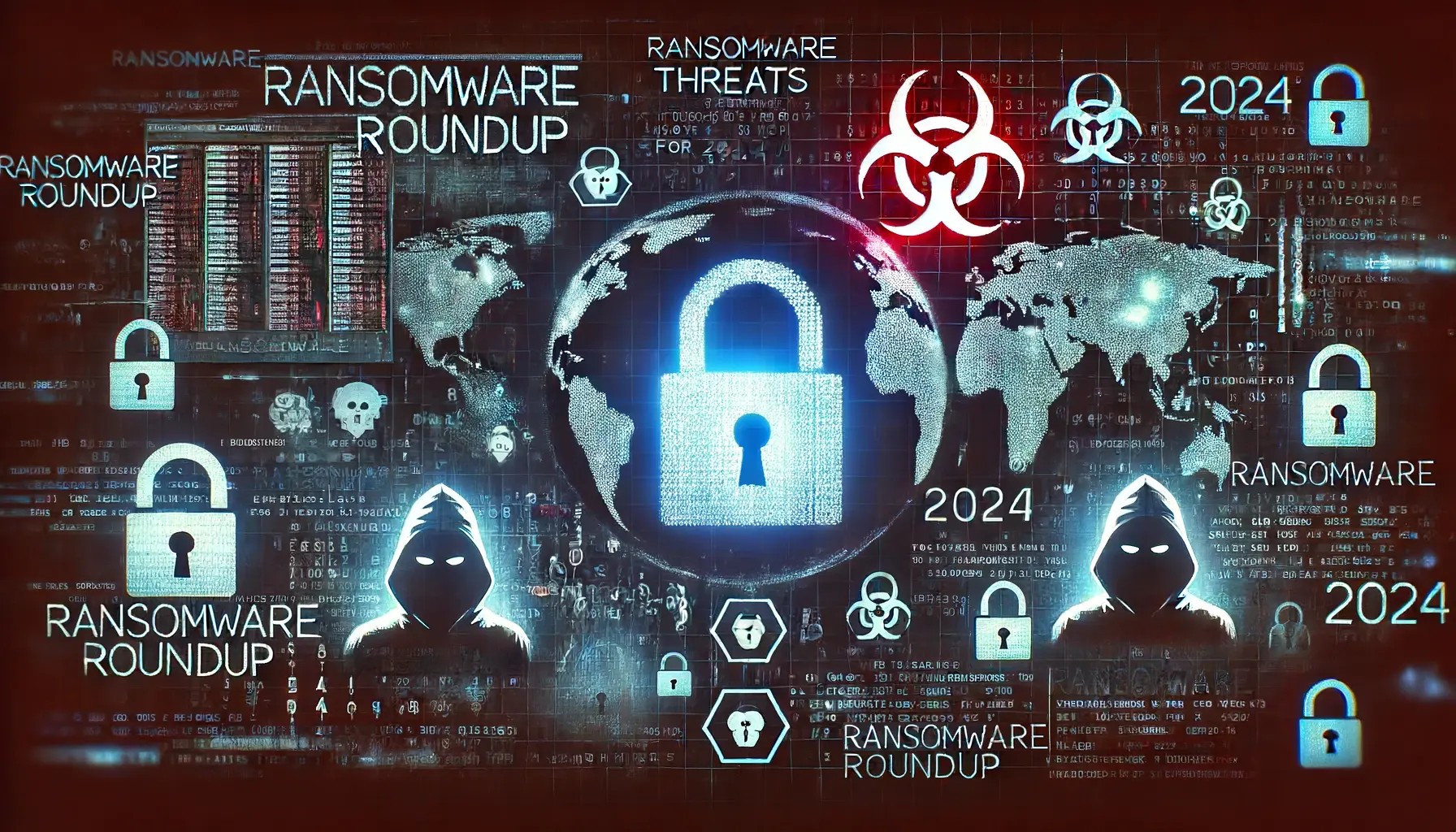As we leave behind the first half of 2024, the relentless rise of sophisticated ransomware attacks remains a persistent cybersecurity trend. Despite intensified law enforcement efforts and major crackdowns, the ransomware epidemic not only prevails but also evolves. According to the Verizon Security Report 2023, ransomware was implicated in 24% of all cybersecurity breaches last year, a trend that continues to escalate into 2024.
A recent study by Thales reveals that ransomware and malware are seen as the fastest-growing cyber threats this year. About 42% of respondents identified them as the top concern. This rapid rise is clearly noticeable through an alarming spike in ransomware activity in May, where ransomware groups claimed nearly 450 victims. This is the highest level of activity in almost a year.
A major hotspot for ransomware attacks, Europe experiences the highest number of attacks globally, constituting about 26% of all incidents. Despite significant disruptions, including the seizure of the LockBit group’s website by authorities, this notorious group and others like it continue to operate and contribute to the continued evolution of ransomware threats.
As we move towards the second half of 2024, this article aims to explore the top ransomware threats, the industries most at risk, emerging trends, and what the future may hold. The ongoing development of new ransomware strains continues to challenge the digital world’s preparedness, making it imperative to stay informed and vigilant.
Victims of Ransomware Attacks in 2024 So Far
These attacks highlight the growing sophistication and aggressiveness of ransomware attacks in 2024 and emphasise the need for proactive measures to protect against them. Each targeted sector exhibits unique vulnerabilities that attackers exploit for maximum impact.
Attacks on Critical Infrastructure
In 2024, ransomware attackers continue to focus heavily on critical infrastructure, with significant disruptions noted across various sectors. For instance, In January 2024, Russian hackers initiated a ransomware attack on Sweden’s only digital service provider for government services.
Healthcare Sector
Healthcare remains a prime target for ransomware attacks, representing 16.32% of all cyber incidents. The sector’s reliance on immediate data access makes it particularly vulnerable to ransomware. Cybersecurity attacks can lead to severe disruptions in patient care and potential risks to patient safety. Group Health Cooperative of South Central Wisconsin (GHC-SCW) reported a network breach by a ransomware gang in April 2024. The attackers stole documents containing personal and medical information of over 500,000 individuals.
State Institutions and Political Systems
State institutions encountered over 450 incidents in 2023, making them the second most common target. In March 2024, Russian hackers tried to infiltrate German political parties through concealed ransomware in a fake dinner invitation. These attacks are often politically motivated, aimed at espionage, or destabilising governmental functions.
Education
The education sector faces continuous threats due to its expansive and typically underfunded IT infrastructures. The most recent attack affected Canada’s largest school board, which manages 582 schools and about 235,000 students. In June 2024, Hackers tried to attack the Toronto District School Board’s (TDSB) technology testing environment with ransomware. Schools and universities are particularly susceptible to attacks, disrupting educational operations and data integrity.
Corporate Targets
Corporate entities experienced a notable increase in ransomware attacks, with significant incidents reported in both 2023 and 2024. Attackers are drawn to these businesses’ valuable data and substantial financial assets, leveraging ransomware for financial gain and corporate espionage. April 2024 – A ransomware attack on GBI Genios has disrupted operations and caused a multi-day outage. The incident has impacted the critical WISO database used by universities and libraries throughout Germany.
Financial Organizations
Financial organisations managing sensitive financial data accounted for 8.3% of attacks. The high value of financial information makes this sector a lucrative target for cybercriminals seeking ransom payments or direct financial exploitation. A recent attack by the CL0P ransomware group has exposed severe vulnerabilities, leading to substantial leaks of personally identifiable information (PII) from customers, including a significant Social Security data breach at a U.S. bank.
Emerging Sectors
New targets have emerged, including the telecommunications, transportation, and energy sectors, each seeing a surge in incidents due to their roles in national infrastructure. January 2024—The Kansas City Area Transportation Authority (KCATA) reported a ransomware attack affecting all communication systems. The attackers demanded $2,000,000 and offered a $100,000/day extension to delay publishing stolen data.
Emerging Trends in Ransomware Attacks
Briefly discuss each of the ransomware trends mostly likely to affect organisations in 2024:
- Supply Chain Attacks: Attacking the supply chain would provide hackers with a gateway to multiple targets. Michael Adjei, a senior systems engineer at Illumio, warns that ransomware gangs exploit company supply chains to conduct highly disruptive attacks. He predicts a significant escalation in software supply chain attacks throughout 2024.
- Double Extortion: Beyond traditional file encryption, double extortion techniques threaten to leak encrypted data unless a ransom is paid, typically in Bitcoin. This method combines ransomware and elements of extortionware, significantly raising the stakes for victims.
- Attacking Unpatched Systems: Organizations still lag in patch management, and hackers are quick to exploit these weaknesses. They deliver ransomware and well-planned phishing schemes through AI-enhanced tools and target unpatched systems with unprecedented accuracy.
- AI-Boosted Ransomware: UK’s NCSC warns that AI could revolutionise ransomware tactics through enhanced surveillance and social engineering. AI technologies are expected to lower entry barriers for cybercriminals and improve the efficacy of attacks.
- Hybrid Ransomware Attacks: Hybrid ransomware attacks integrate data extortion and victim harassment, causing extensive disruption and financial losses. These attacks exploit entire supply chains, using methods ranging from double to fake extortion, maximising both threat levels and potential damage.
- Ransomware-as-a-Service (RaaS): RaaS platforms are becoming increasingly consolidated by offering enhanced encryption, evasion tactics, and customer support. This advancement makes ransomware attacks more accessible and potentially more successful while broadening their adoption among cybercriminals.
Form a Resilient Digital Core with IMS Nucleii
The first half of 2024 has made it clear that bad actors will continue to leverage ransomware to disrupt critical sectors and compromise sensitive data. At IMS Nucleii, we understand the complexities of these threats and are dedicated to providing advanced cybersecurity solutions that safeguard your operations.
Today, staying informed about the latest cybersecurity trends, forming meaningful partnerships, and employing adaptive strategies are more crucial than ever.
We invite you to download our whitepaper, “The Future of Cybersecurity: Trends and Predictions for the Next Decade,” to explore the future of cybersecurity and how to stay ahead of emerging threats. Stay vigilant, stay safe, and let us help you secure your digital landscape.












